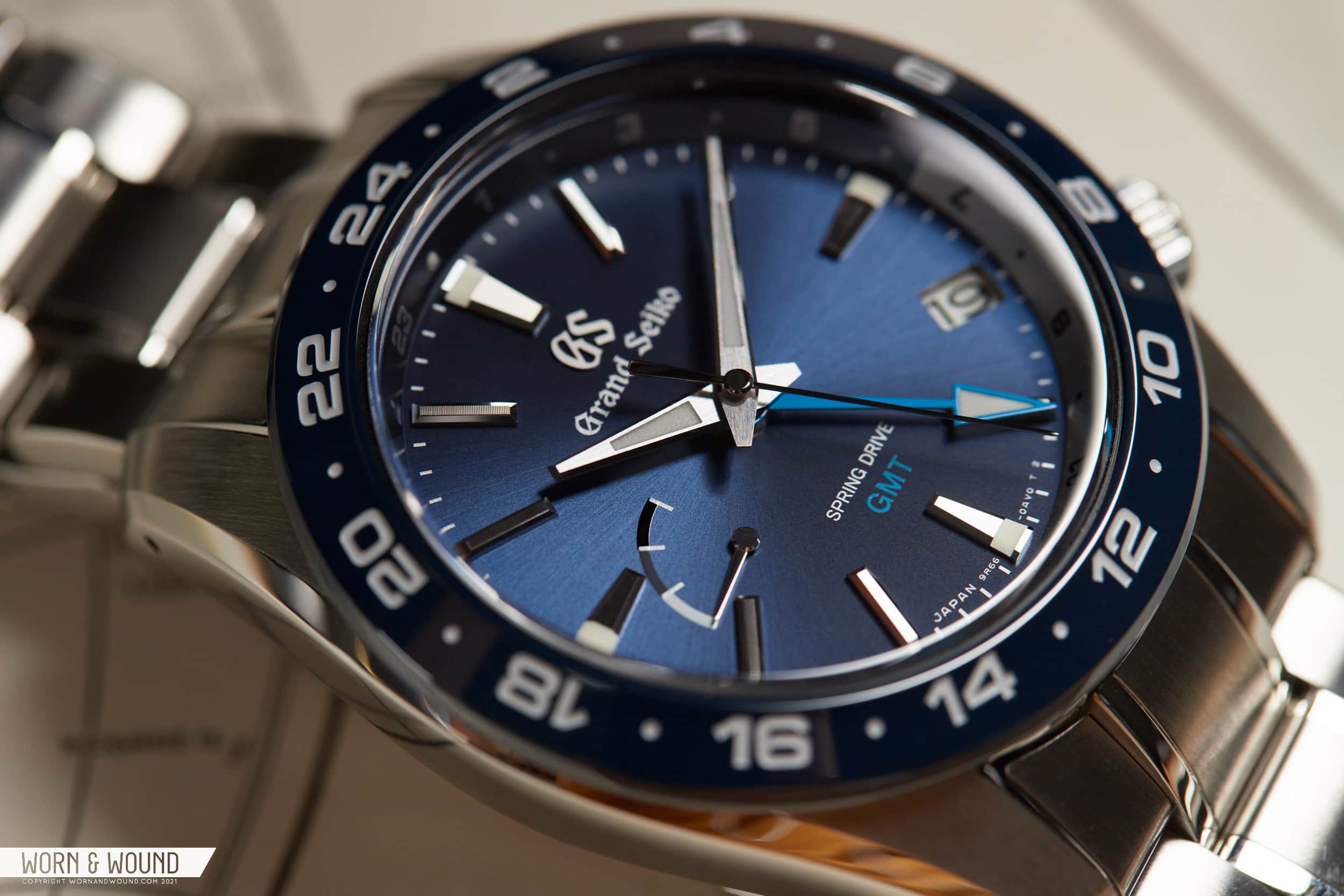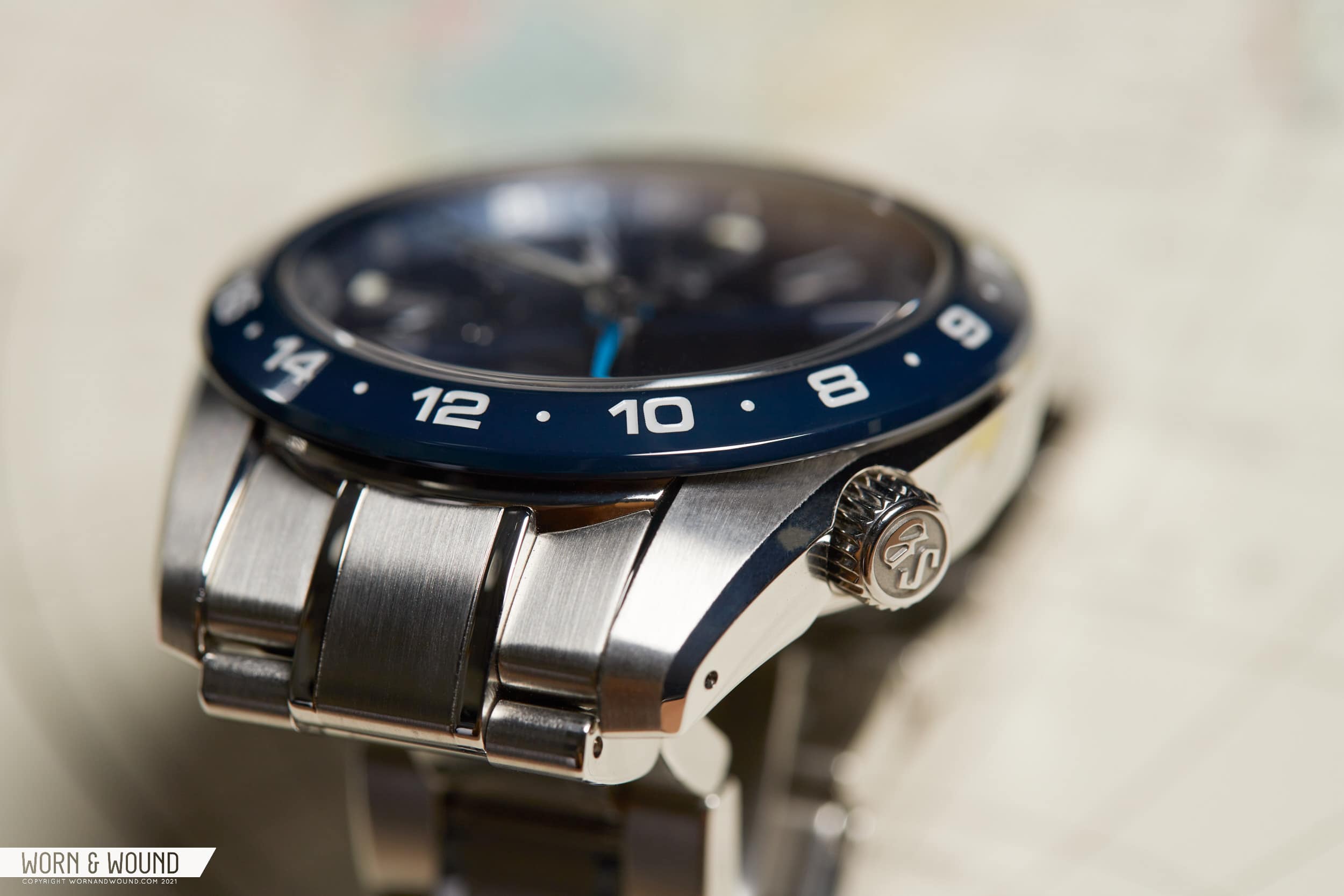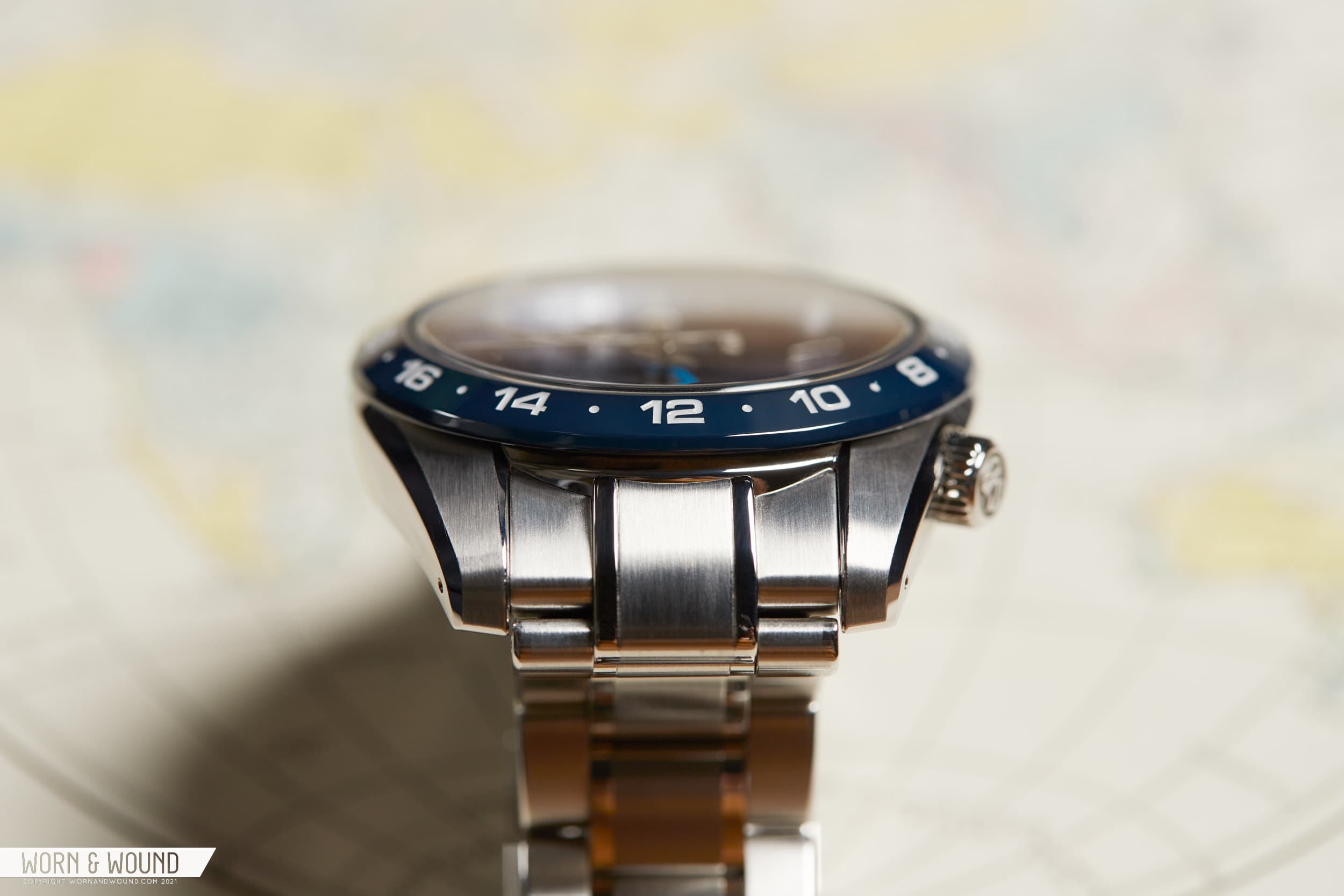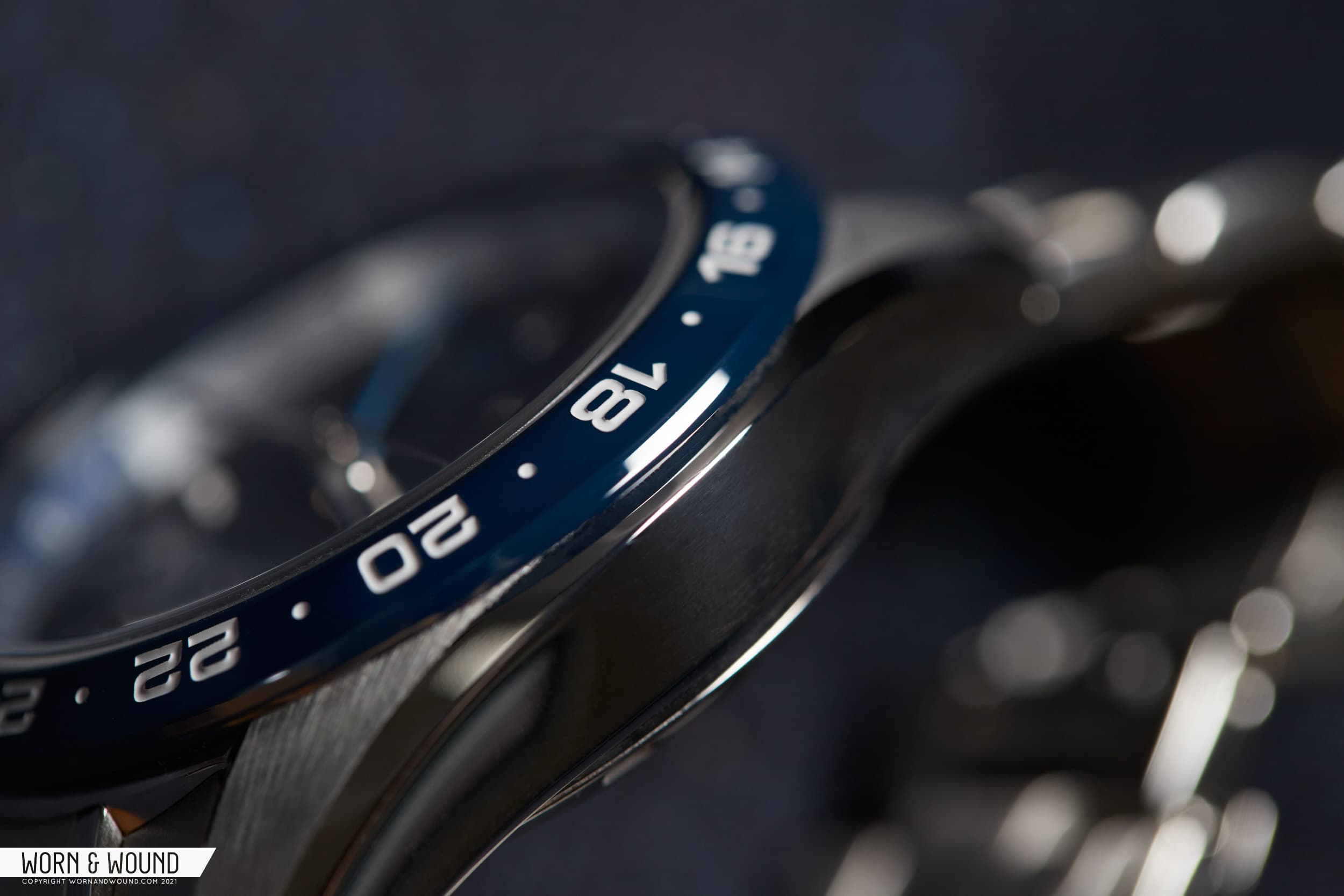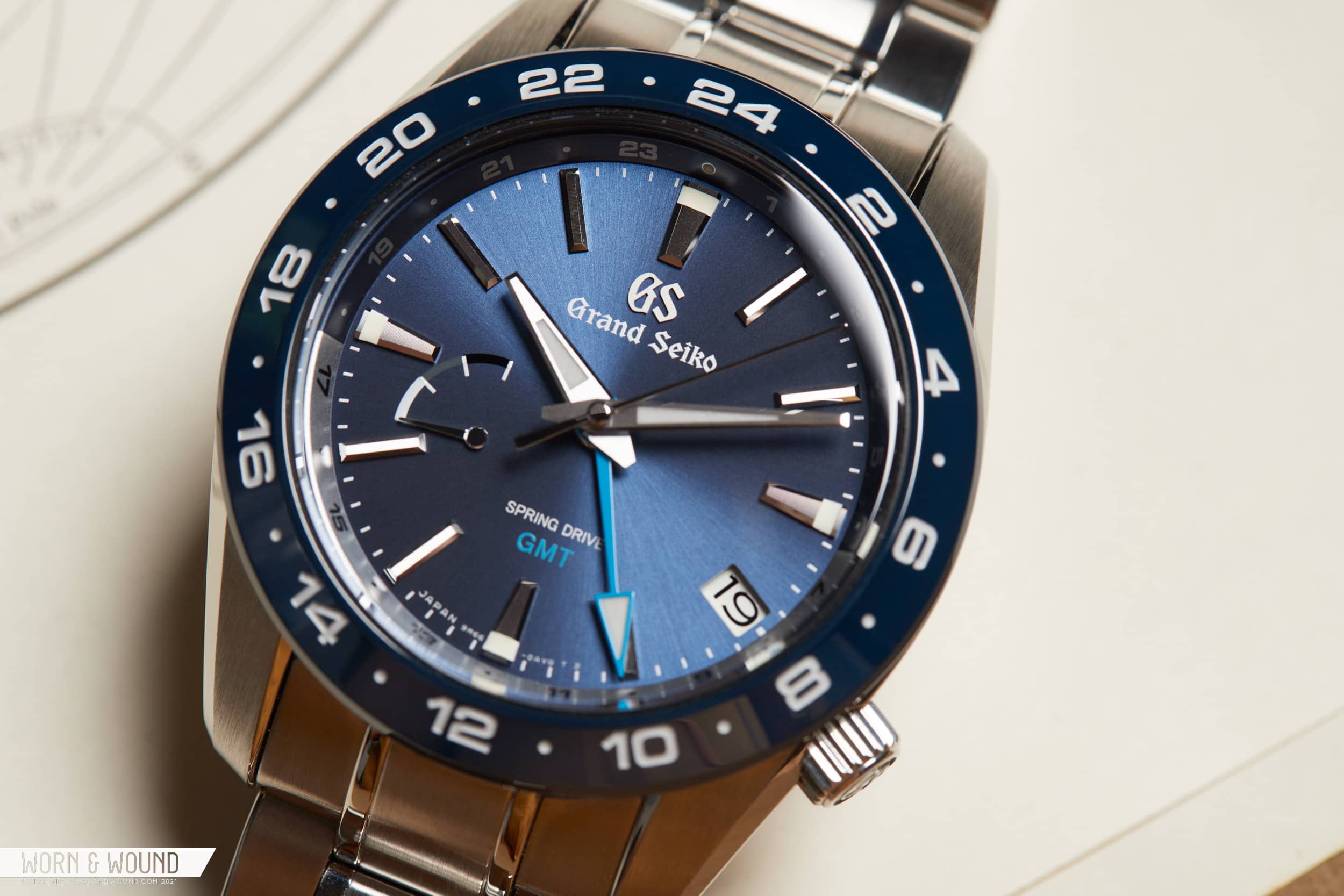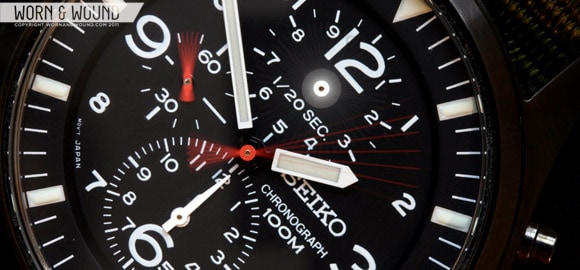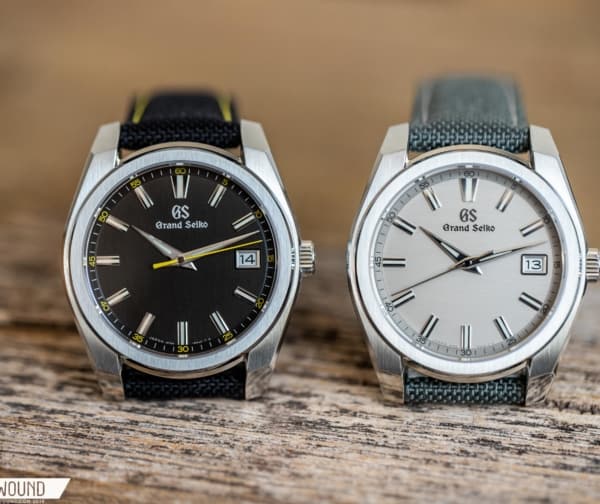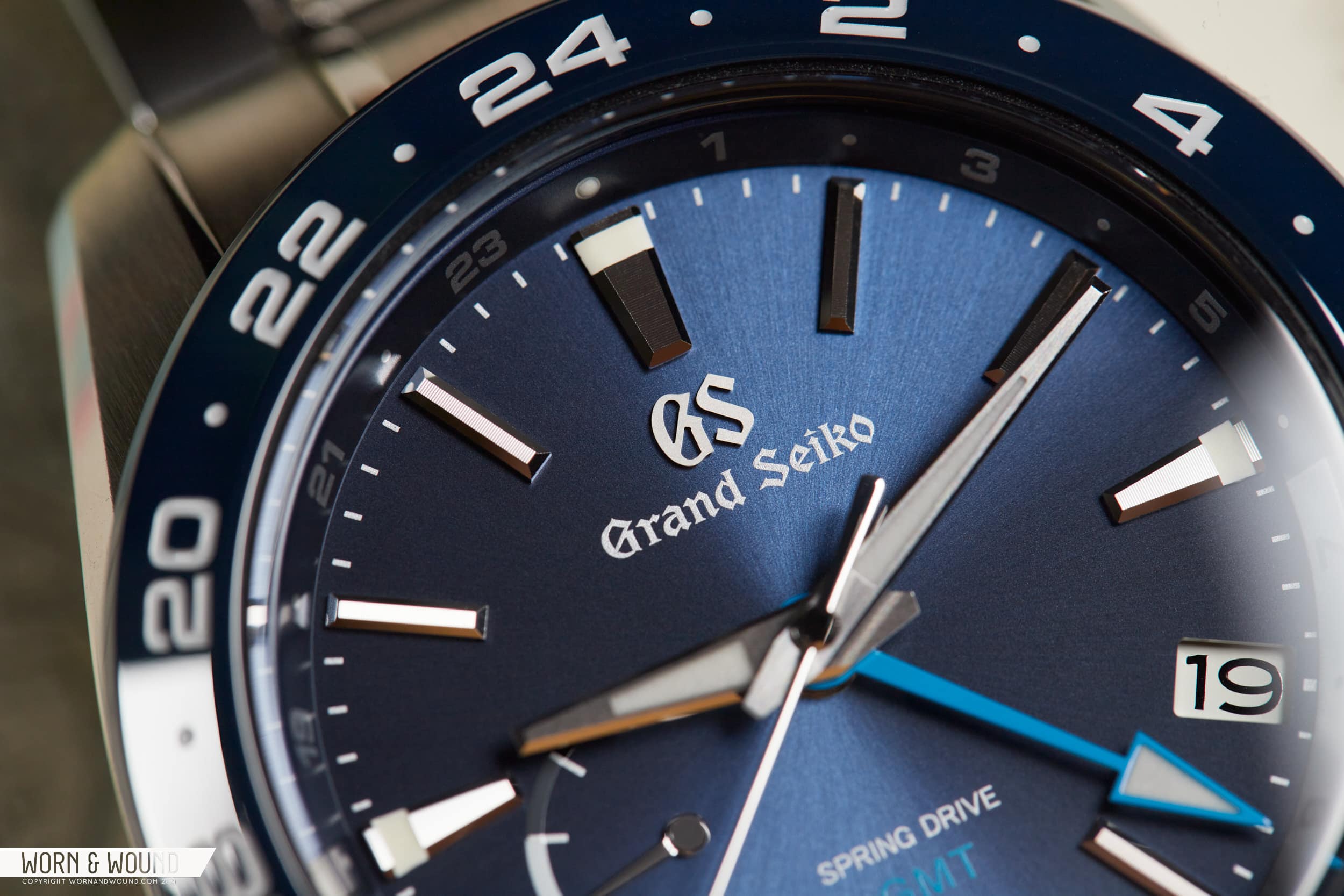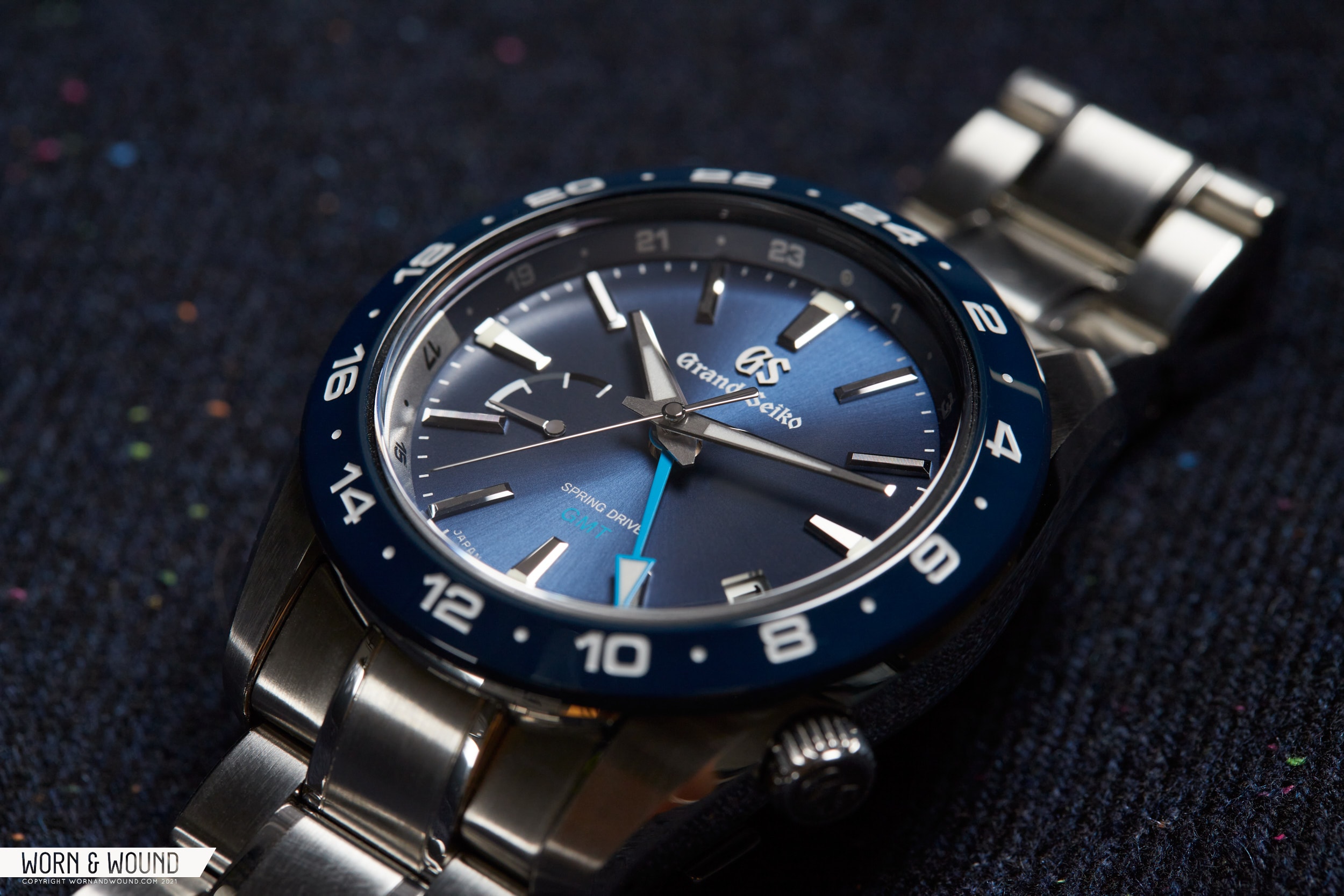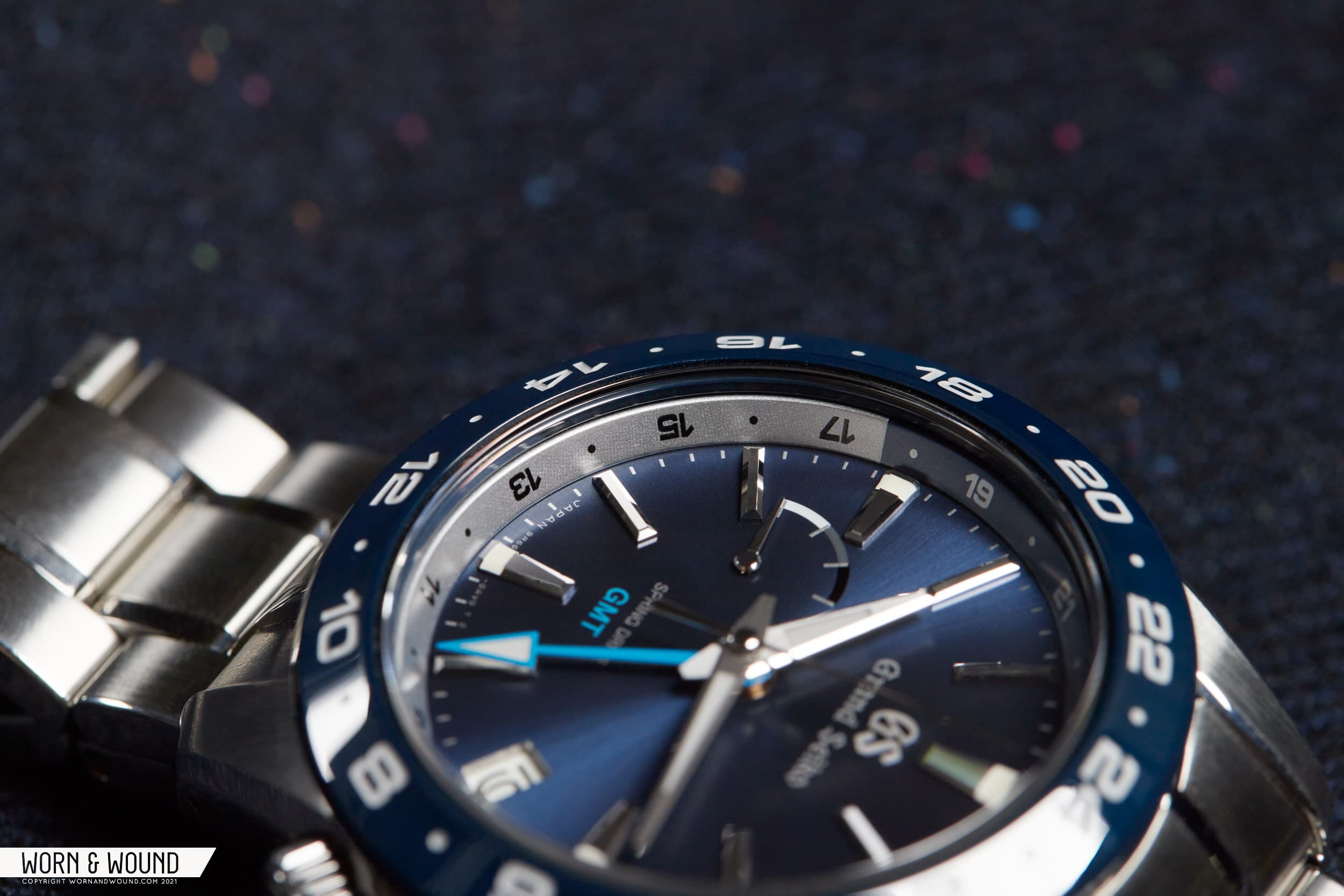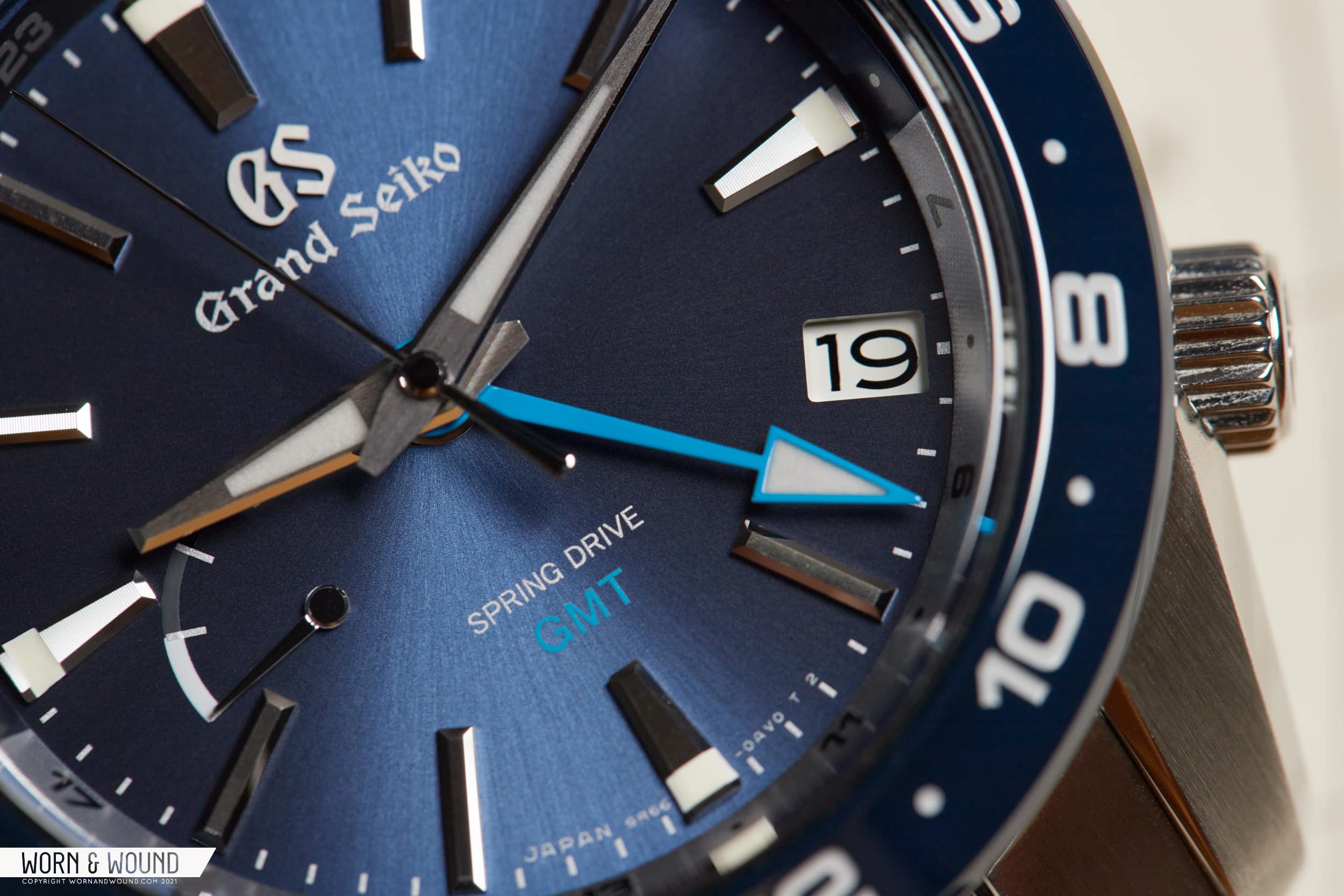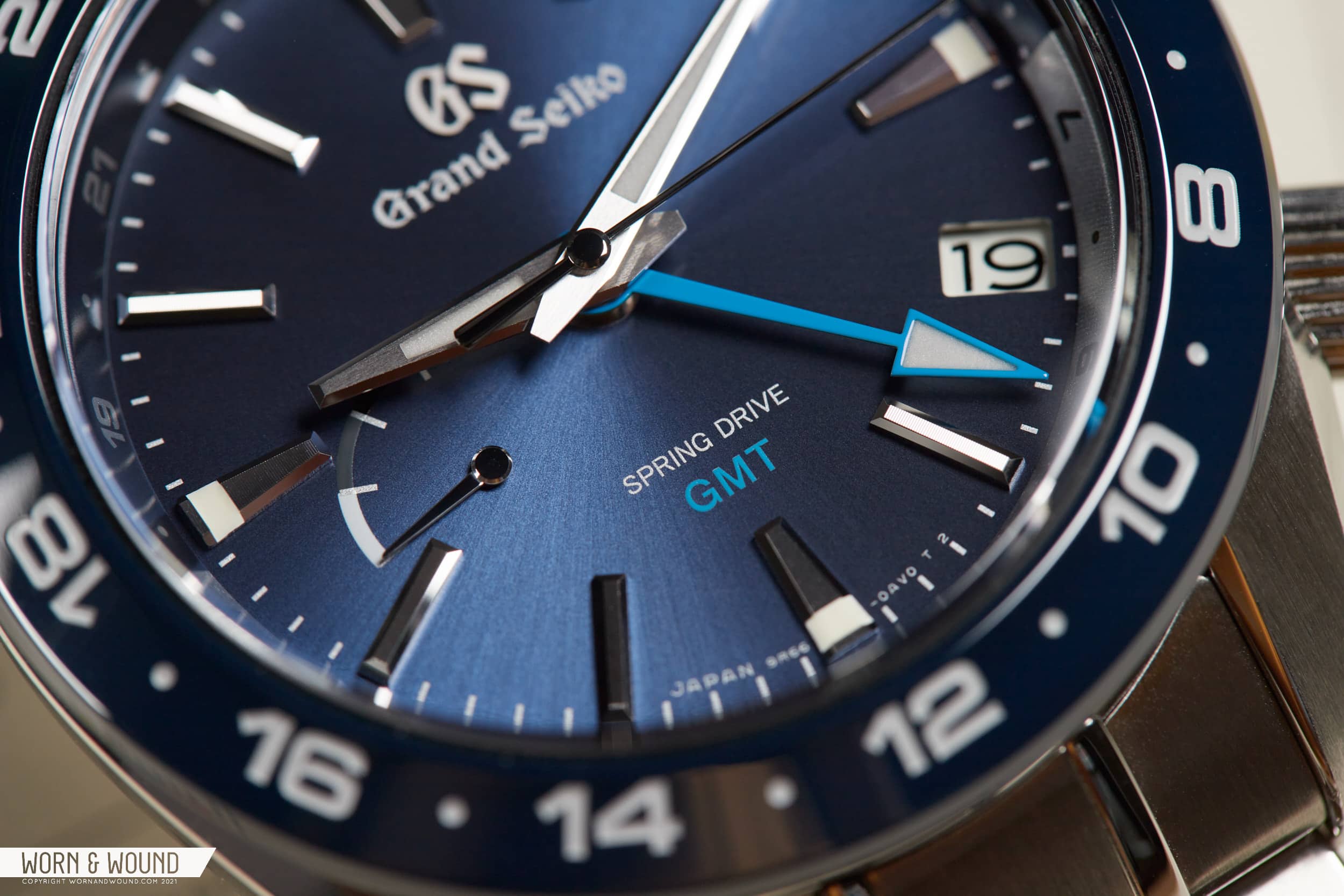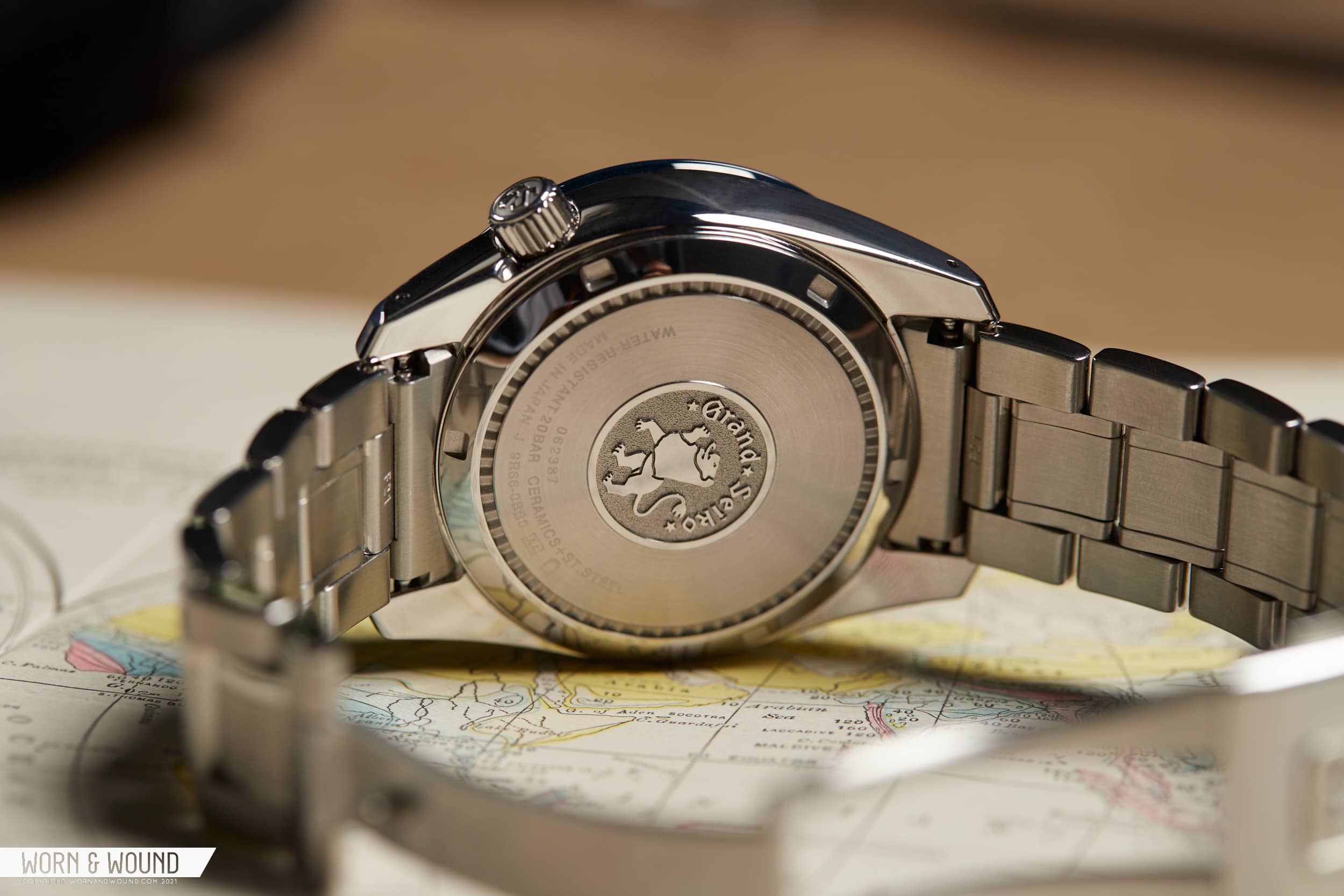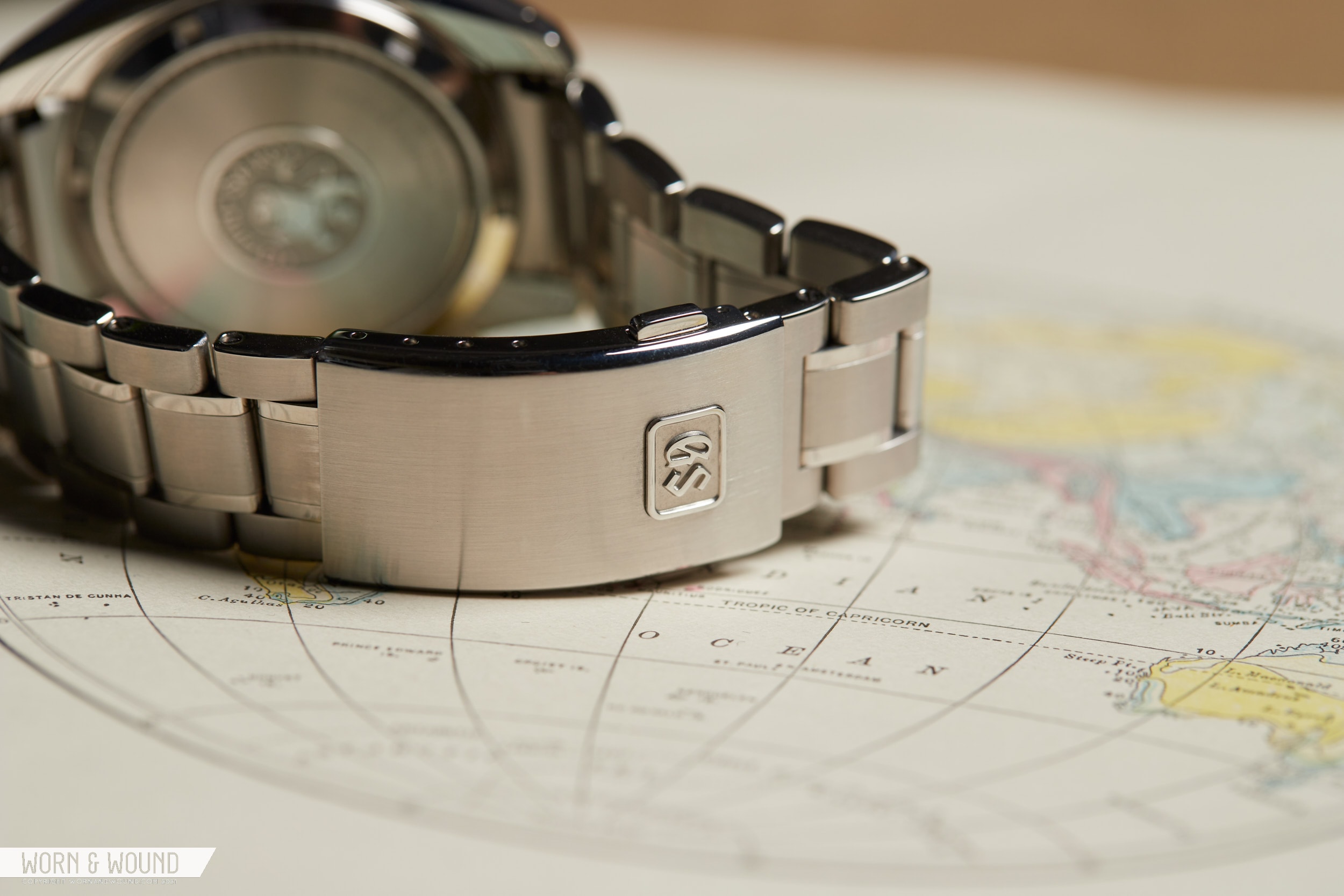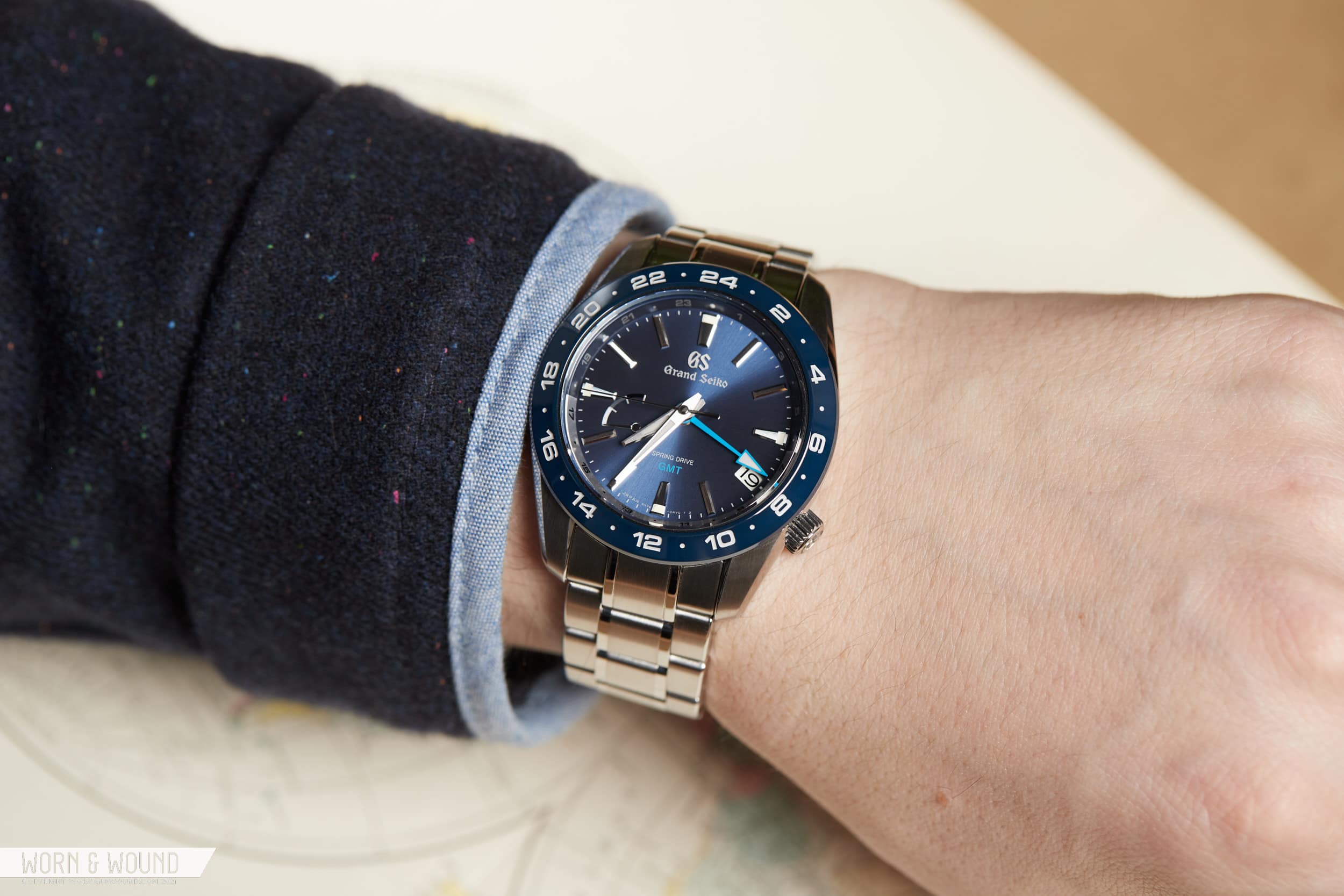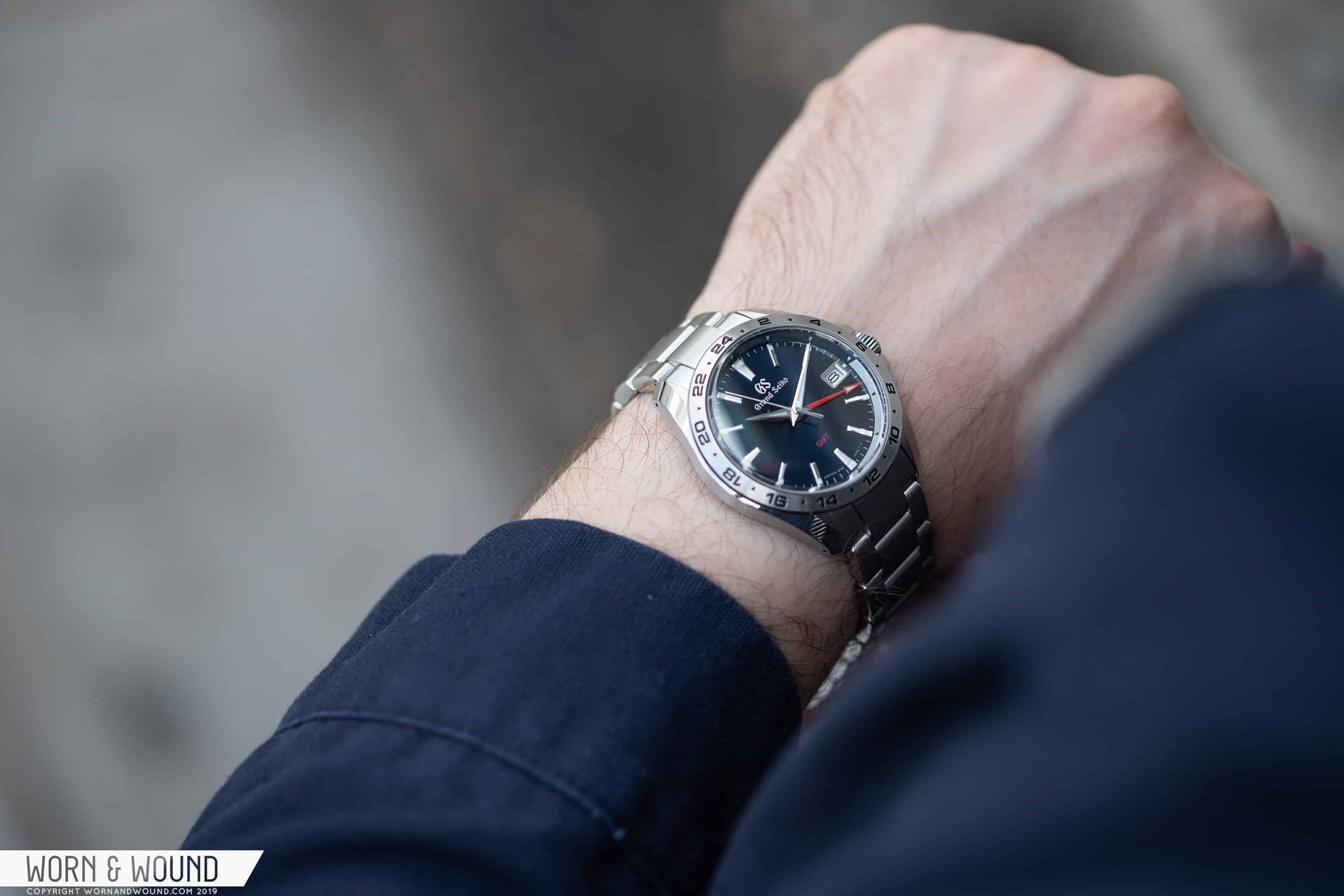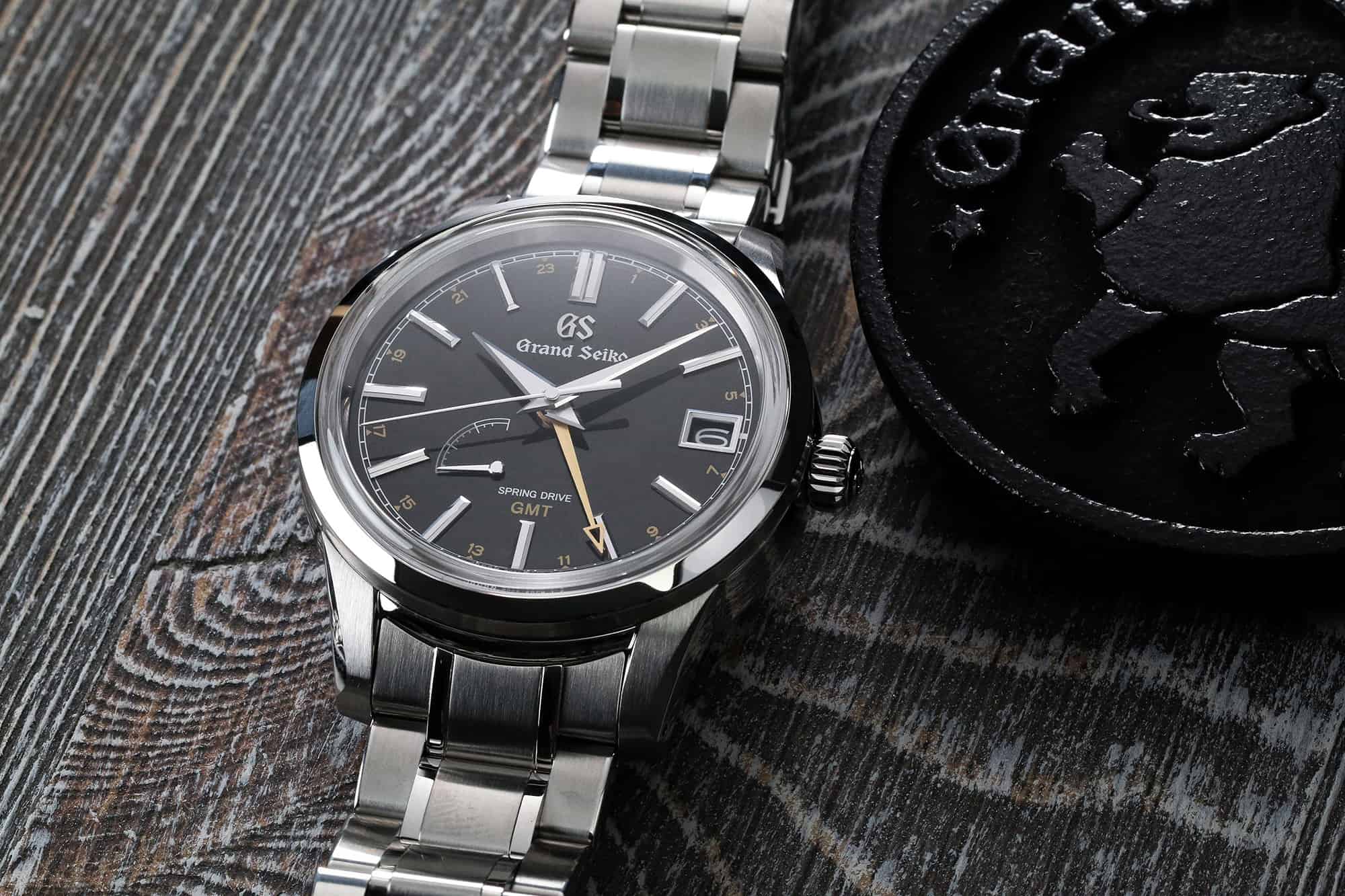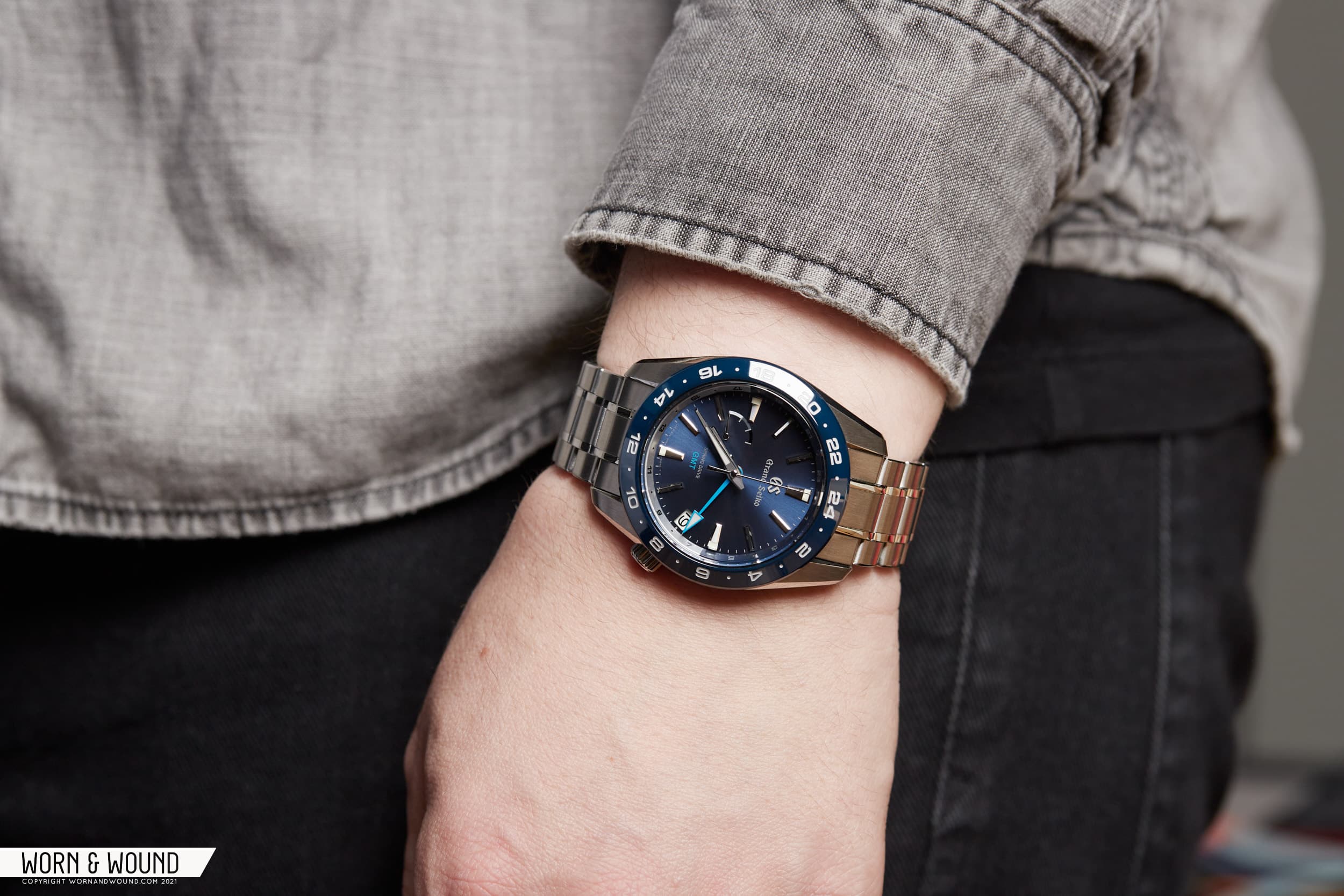Grand Seiko is known for many things, from their case finishing and dial textures to their Spring Drive and hi-beat movements, but also for making some rather large sports watches. Maybe that’s the wrong note to start on, but it’s true. Though models like the SBGC231 Spring Drive chronograph and the SBGJ239 hi-beat GMT are both gorgeous, they are also north of 44mm, so fairly designated as “big” watches. Well, in the fall of 2020, Grand Seiko began to address this with a trio of sports watches with trimmer dimensions, the SBGE253, 255, and 257.
With 40.5mm diameters, these models fall in far more wearable terrain, and nearly a full 4mm narrower than the previous generation of the same line (SBGE). Despite the decrease in size, they feature 200m of water resistance, fixed ceramic bezels, and, most notably, Spring Drive GMT movements. Clearly, these are still very capable, versatile, sport-travel watches that, with crowns down at four, still read very much as Grand Seikos. Available in black, blue, green and eventually a brown LE, these seemed to satisfy a desire from Grand Seiko fans, and were immediately met with adoration.
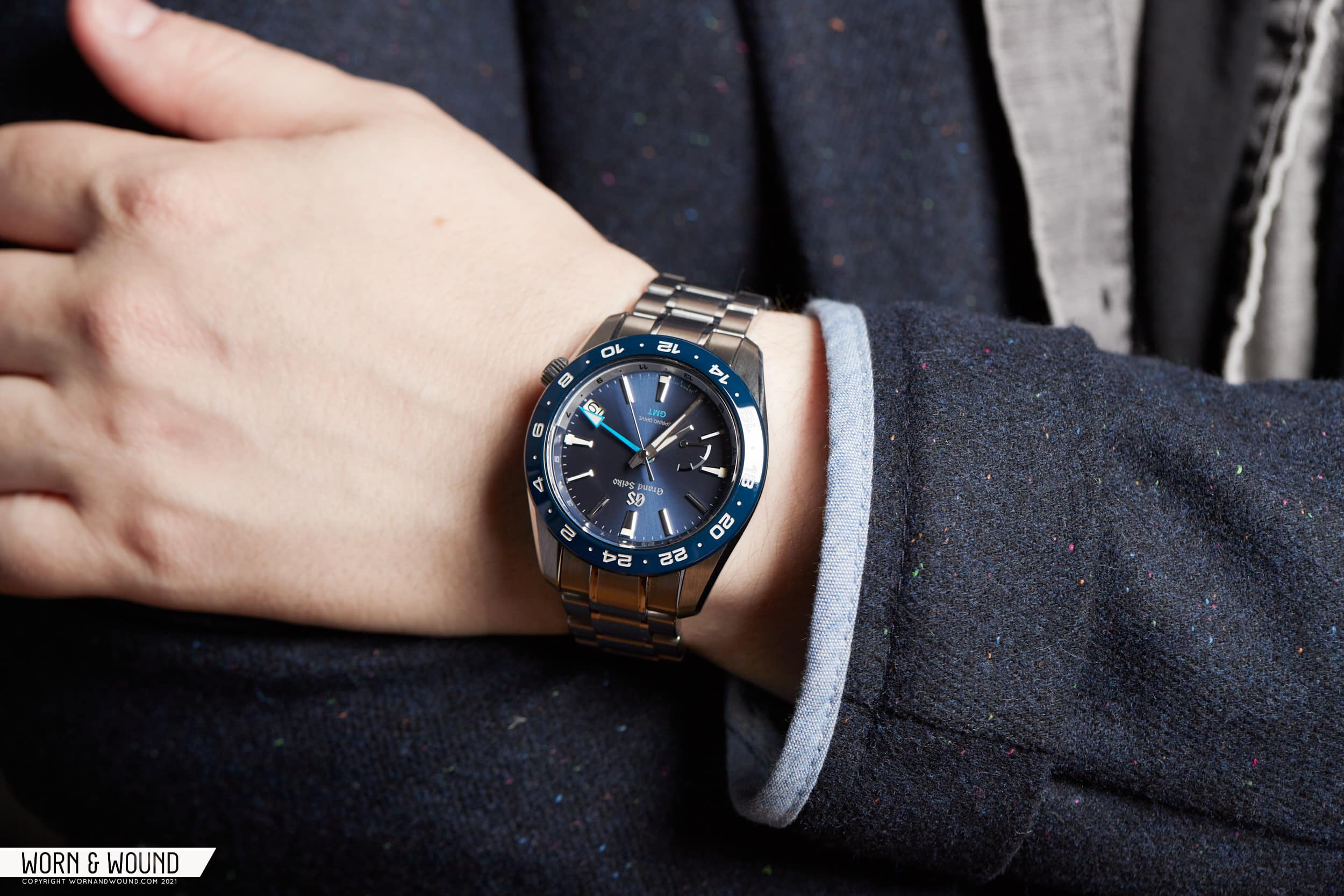
With the finishing one expects from the brand, and a better fit (though more on that later) the question I found myself asking with the SBGE255 wasn’t whether or not I liked the watch (spoiler, I did), it’s really what the purpose of such a watch is, especially compared to other watches in their catalog that showcase much the same features, and how it would fit in a collection. Additionally, with a price tag of $6,200, if this would be my go-to for a robust, sport-travel watch.









 Featured Videos
Featured Videos




